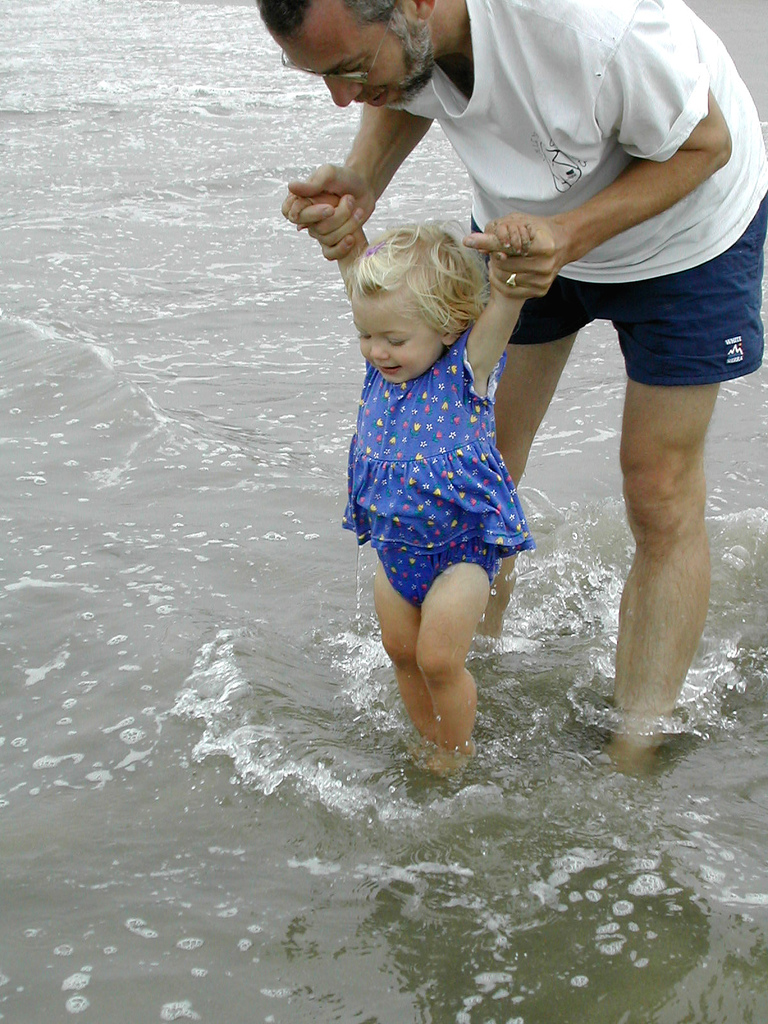No matter how hard you try to keep your child on a predictable and comforting sleep routine, disruptions are inevitable, and so are some toddler sleep problems. Some routine-busters, like a vacation or a weekend at the grandparents, are planned and welcome. Others, like illnesses, strike without warning and can turn a child’s sleep upside down. Some children are more adaptable than others, and get back into their normal routine without missing a beat. Parents also handle change differently. Some Moms and Dads really strive to keep that schedule in place at all costs, while others consciously decide that the circumstances warrant breaking the sleep rules temporarily, knowing they may have to pay a price in terms of sleep.
As a rule, it’s a good idea to return to your normal sleep routine as soon as possible, and most kids adapt quickly, particularly if they have already developed fairly good sleep skills. Sometimes you’ll have to do another round of sleep coaching (often accompanied by some crying), but it usually goes faster than the initial go-round because you are reminding them of a learned skill, not introducing it from scratch. I like reminding children of sleep rules even while we’re bending them. “You are sleeping in the same room as Mommy and Daddy while we are at the lake but as soon as we get home, you and Teddy Bear will be back in your princess bed and Mommy and Daddy will be in our bed but we’ll come check on you every night.” Or “I’m going to pick you up and hold you until you fall back asleep to make you feel better, but as soon as your tummy ache goes away, you won’t need mommy to do this, you are going to sleep great again and I’ll give you so many stars and stickers because I will be so proud.” Even very young toddlers understand some of this, and older ones get it quite well. It helps to make the rule- breaking less confusing to them, makes the intermittent reinforcement less powerful. They may have an easier time re-adapting to their old routine, understanding your expectations, once the disruption has passed.
When you travel, your child will probably backslide a little bit but try not to throw out all your gains and try not to rely on whatever sleep crutch you’ve just eliminated. For instance, if you stopped nursing during the night, don’t start again. Go ahead and do lots more soothing and comforting on the road than you would at home, but find some way of soothing that won’t lead you back to where you started, that won’t let you get caught in the intermittent reinforcement trap. You don’t want her thinking, “You got me up to nurse when we were in that strange place, maybe you will still get me up to nurse now that we are home!” You can’t blame her for trying! If your child needs extra reassurance to go to sleep in a new place, consider regressing in your chair position. For example, if you have progressed to no longer sitting in the room at bedtime, you may want to sit by the door or closer to her crib the first couple of nights in a new place or do more frequent checks instead of regressing completely back to your original sleep crutch.
Always bring along the lovey and pack a night light, and as there’s no such thing as traveling light with a small child anyway, go ahead and take along favorite books and toys. Many families bring crib sheets or blankets too. (Some hotels don’t even provide much in the way of bedding with the crib or port-a-crib so check in advance or pack linens protectively). You want the child to have items that feel and smell comforting and familiar. If you are one of those moms who always keeps a small bag stocked with first aid supplies, travel sized medications, and baby toiletries, stick the spare nightlight and bulb in there as well, so you don’t have to worry about forgetting it. If you are staying at a relatives’ home or a rental condo, you may want to take your baby monitor with you too so you don’t feel like you have to stay by her side in a dark room from 7 p.m. on!
Before you go, talk to the hotel about whether it has cribs, port-a-cribs or pack-n-plays. Or if you are visiting relatives, think about whether there will be enough grandchildren visiting over the years to make it worth investing in an inexpensive crib, even one of the smaller fold-up varieties. Some babies don’t really like sleeping in those portable cribs with thin mattresses. You’ll learn quickly what your child can adjust to, and you’ll then be able to pack and plan accordingly on subsequent travel.
With older children who are no longer in a crib, you may request a roll-away bed, or if the child will be in a regular hotel bed in your room, you may see if you can move it closer to the wall for safety. Put an extra pillow on the floor in case he falls out, or place the bed or cot mattress on the floor so it doesn’t matter if he rolls off. You may want to place the mattress right next to your bed, or between your bed and another bed holding older siblings, so that the little one is reassured by being close to you. There’s a good chance he will get out of his bed and sneak into yours. Some parents return the child to his own bed, others figure it’s a losing battle in the hotel. If he does end up with you, carefully explain that he can sleep with you in the hotel (or at granny’s house or whatever) but will have to go right back into his own bed when you get back home.
If possible, try to have your child’s sleep in one place throughout the whole vacation. You may be better off with a week at the beach than on a road trip with a different motel (and possibly a different crib) every night. If you are visiting several relatives, it may be worth sleeping in one home for the entire trip, and visit with other family members during the day or over early dinners. For instance, one couple with a nine-month- old originally planned a five day vacation – two nights with one set of grandparents, two with the other, and one night at an aunt’s. I gently suggested they might want to reconsider, so they chose one set of grandparents as a “base camp” and arranged to have relatives come there to visit them or to spend part of the day at other family members’ homes. They carefully explained to all concerned why their baby needed this, and to avoid bruised feelings or rivalries they immediately let all concerned know that the other grandparents would be the “base” for the next visit.
Try very hard to make sure your children get enough rest on vacation. With all the change and stimulation, they may not nap while traveling. It’s up to you how hard you press the nap, you may get a sense that if you insist and make the effort, he will nap. Alternatively, you may figure that you can spend the whole afternoon in your hotel room and he still won’t sleep a wink so you might as well go out and enjoy yourself, maybe he’ll doze in the stroller. It depends on how old the child is, and how long you are away. An infant absolutely still needs naps, a three year old can probably skip naps for a few days as long as you get him to bed at night earlier than usual. You might also want to plan some of your travel to overlap with naptime. As you know, I normally want children to sleep in their beds, not in cars, but on vacation, a car nap might be the best you can do, plus if you are going to be in the car for a few hours anyway, it may be easier on everyone if she sleeps through it. Try to get back to your hotel (or relatives’ home) on the early side, to have an early bedtime. A vacation isn’t much of a vacation when the kids are melting down all day.
When you get home, make it a top priority to return to your normal routine as quickly as possible. Some families keep their activities very light for a day or two when returning home to really focus on getting napping and bedtime back in place. These days will also help you recouperate and become familiar again with your household’s routines. Please remember these are just guidelines to follow, and each family member’s individual personalities should be considered when traveling and adjusting to their routines. I hope these suggestions can help you and your family have many successful and safe trips together in the future!
Was this article helpful to you? Please tell us by commenting below! For more baby, toddler, and family sleep tips and tricks, please subscribe to The Sleep Lady’s Facebook, Twitter, Pinterest, Google+, and YouTube channel! If you are looking for more sleep content, please check out Get Sleep Now-an exclusive members-only area designed to provide in-depth help and support during your sleep coaching experience.
photo credit: angela7dreams via photopin cc




